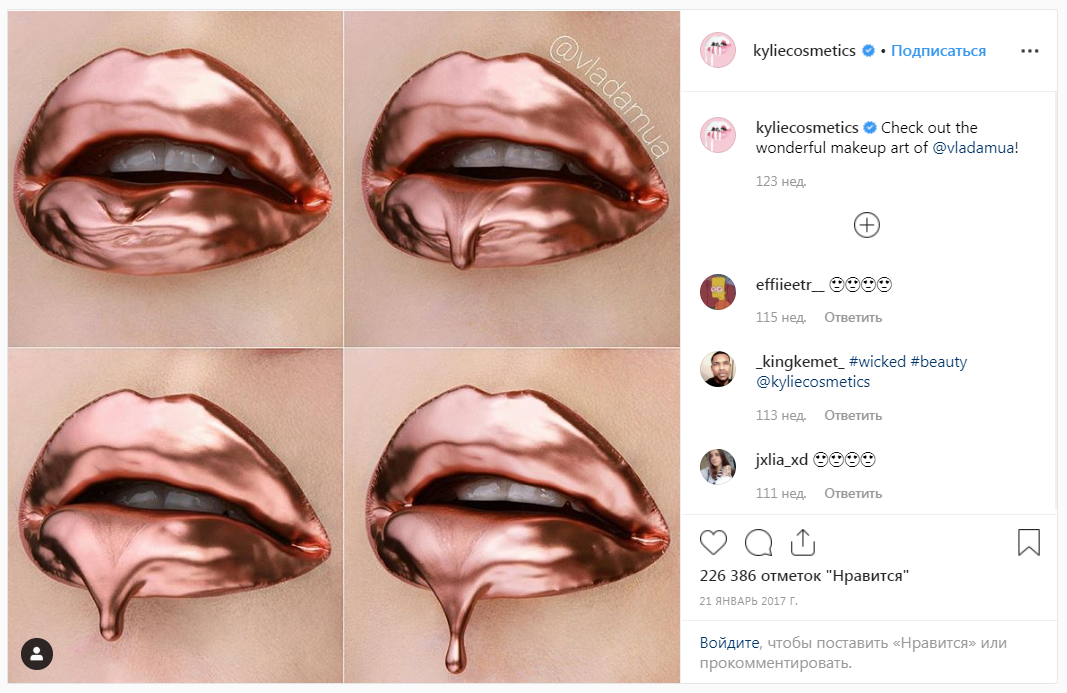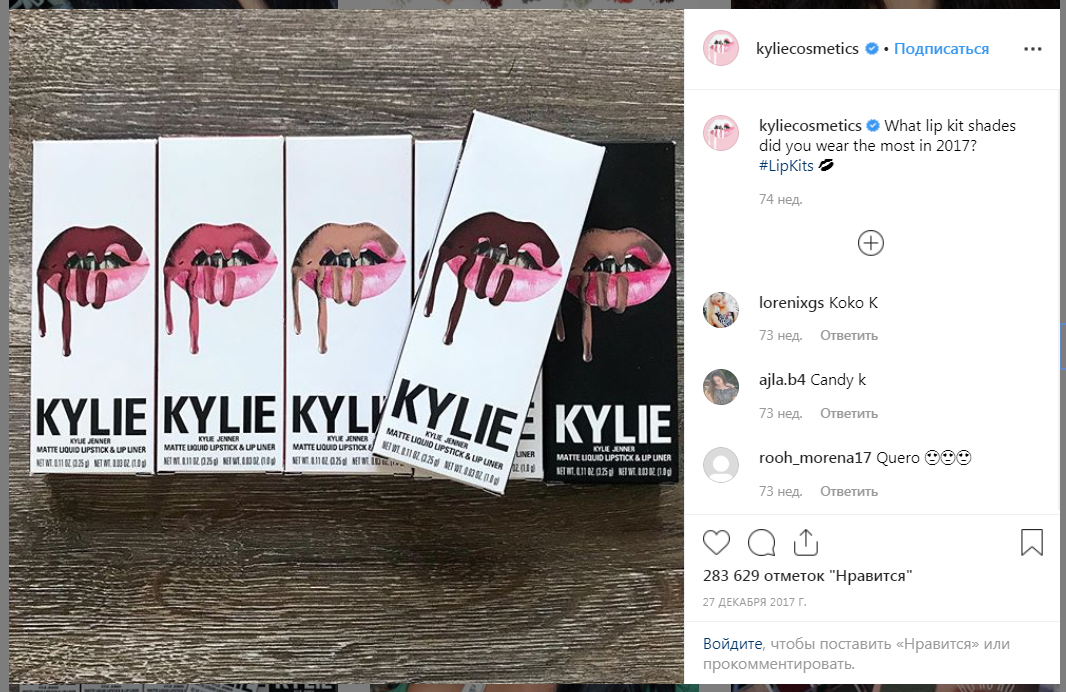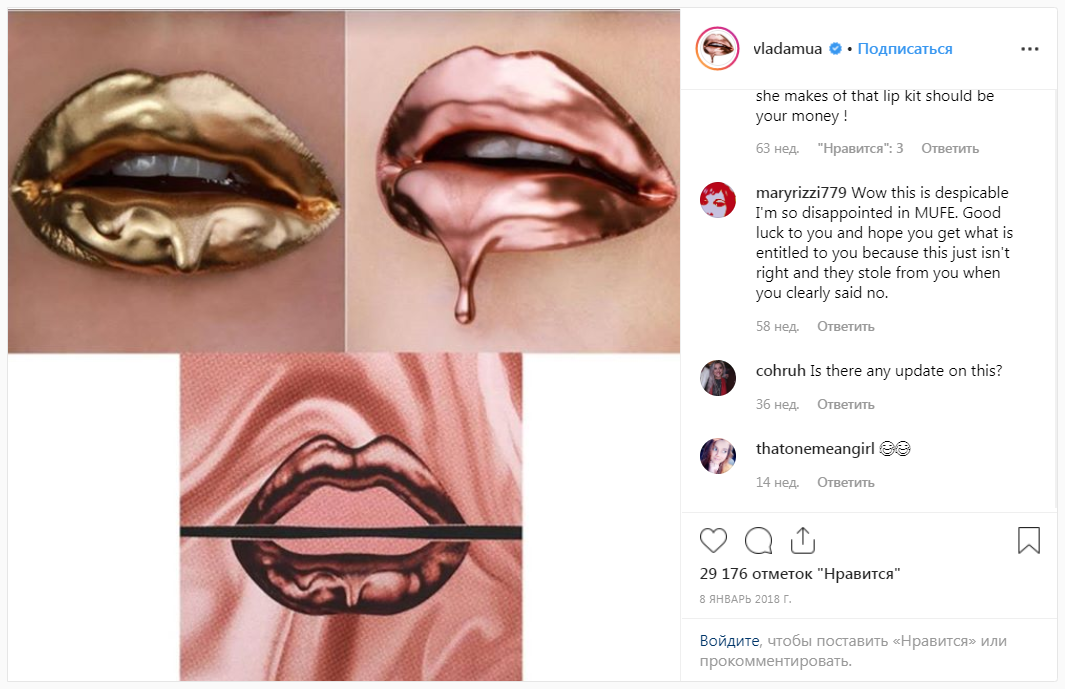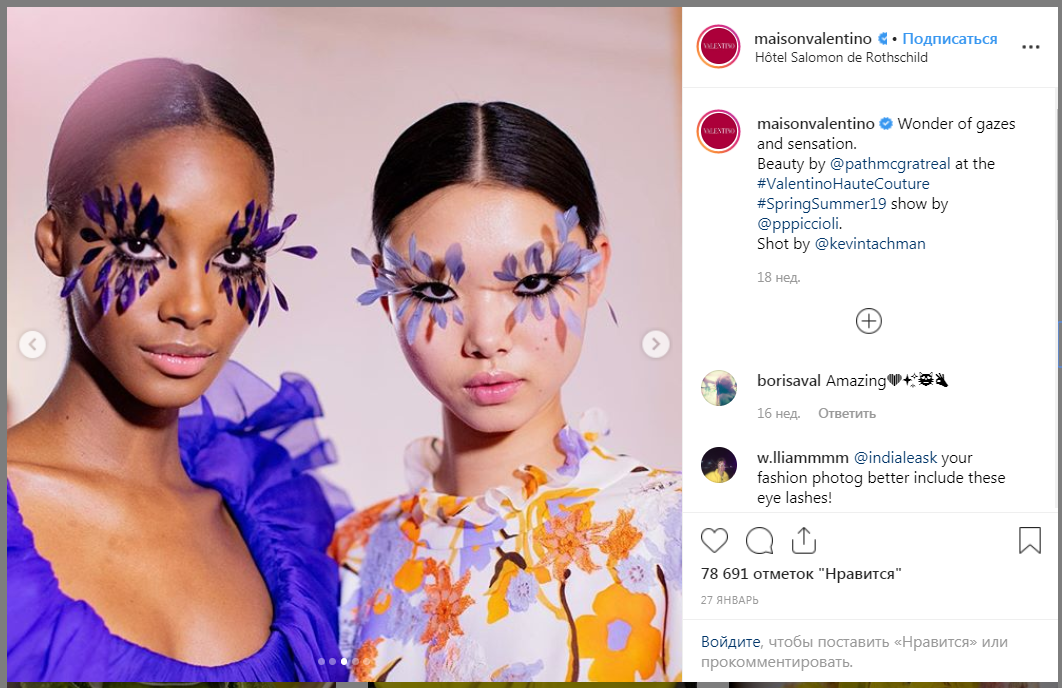Services


Trademark Search
and Clearance
Search Onlineand Clearance

Leading IP Firm
Our ratings
The development of the intellectual right began many centuries ago. The first norms are dated as far back as to the 14th century, and they are connected with a system of privileges to encourage new inventions, including the development of book printing and other subject matters of the copyright. Despite such a long-term development of this field, the controversial and interesting situations connected with the emergence of new results of the human creative activity still appear.
Let us talk about such popular phenomena as make-up, grease-paint and tattoos. First, one should get into what these concepts mean. Make-up is understood as “the art of a face design with the help of cosmetics, paints, creams, eye shadows, as well as such design itself[1],” grease-paint – “the art of changing the appearance of an actor (mainly a face) with the help of special paints (grease-paint) – plastic and hairy stickers, a wig, a hairstyle, etc.[2],” a tattoo - “drawing pictures on a body by pinning and rubbing colouring substances under the skin[3].” The history of the development of these phenomena numbers many thousands of years, and the attitude towards them changed throughout the centuries. Whereas earlier they had a certain religious, ritual or other meaning for people, then in the XXIst century, with the development of globalization processes, they are used everywhere: both in an everyday use (to decorate oneself or to eliminate defects), and for commercial or artistic purposes, as a means of drawing attention to one’s activities, skill or products.
All these phenomena are very common in the modern world. However, is it possible to protect such subject matters with the help of the norms of the copyright?
Paragraph 1 of Article 1259 of the Civil Code of the Russian Federation enshrines a legislative definition of the subject matters of the copyright, which are scientific, literary and artistic works, irrespective of the merits and purpose of the work or the method whereby it is expressed. However, in order for some result of intellectual activity to be recognized as a subject matter of the copyright, it is necessary for it to comply with the patentability criteria. The following shall be traditionally referred in literature to the criteria for the recognition of the result of intellectual activity as a subject matter of the copyright[4]:
1. A Creative Character of the Work. According to Article 1257 of the Civil Code of the Russian Federation, the author of the work shall be recognized the citizen by whose creative work it has been created.
2. The expression of the work in an objective form. By virtue of Paragraph 3 of Article 1259 of the Civil Code of the Russian Federation, the copyrights shall extend both to promulgated and non-promulgated works expressed in any objective form.
In Article 1259 of the Civil Code of the Russian Federation, make-up, grease-paint and tattoos as the subject matters of the copyright are absent in the general list. However, the list is open. There is a question: whether can they be recognized as the subject matters of the copyright?
If we speak of the make-up and grease-paint in the current western practice, the answer is yes. One of the first cases is the case of Carell v. Shubert 2000[5]. The case is connected with the famous Broadway musical Cats. Despite the fact that the actors were constantly changing, the grease-paint was always applied on in the same way. In this case, the court recognized the stage make-up to be the protected copyright. The similar decision was made by the court in the case of Paramount Pictures Corp. v. Axanar Prods., Inc., which confirmed the existence of the copyrights to the stage make-up used for the actors in serial Star Trek[6], namely the Klingon make-up, the pointed ears and eyebrows. Also, an unusual situation is connected with the grease-paint of the group KISS. Initially, they were denied of having the legal protection to their stage make-up. However, their lawyer managed to persuade the Office that their stage make-up had become more recognizable than the performers themselves. How did he manage to do so, you may ask? At one of the performances, the lawyer of the group KISS replaced the real drummer, who was playing on the drumkit, to an outsider. What happened then, you may ask? No one noticed the difference, because before replacing, the same grease-paint had been applied on him.

The make-up of the performers of the group KISS[7]
Thus, the lawyer managed to persuade the United States Patent and Trademark Office, and the group KISS managed to be the first to register make-up as a trademark.
However, many large companies do not bring the case to the court, but they solve such disputes by way of reaching a compromise. For example, the disputes between make-up artist Vlada Haggerty (@vladamua) and Kylie Cosmetics. Kylie Cosmetics twice copied the make-up ideas from Vlada's page to promote their cosmetic products. Kylie first copied Vlada's make-up in the promotional campaign for the Christmas line #HolidayEdition by Kylie Cosmetics in 2016.[8] The photographies were too similar to call them a simple coincidence: the red lips with en ombre effect, gold manicure and gold paint on the fingers that close the eyes.

Make-up author Vlada Huggerty is on the left, the photography for the Christmas line #HolidayEdition by Kylie Cosmetics is on the right[9]
The case did not reach the court; the conflict was resolved peacefully, namely: Kylie published a post on Instagram, where it admitted that it had been Vlada’s work that inspired it to create this photography for #HolidayEdition, indicated Vlada’s authorship and paid the money compensation.
The second case is connected with Vlada's famous make-up Lip Drop (flowing lips), which idea was copied not only by Kylie Cosmetics[10] in 2017, but also by Make Up For Ever and Louis Vuitton[11] in its limited edition in 2018.

Lip Drop by Vlada Haggerty in the official account @kyliecosmetics [12]

The packages of Lip Kits by Kylie Cosmetics in the official account @kyliecosmetics [13]

A comparison of the details of the original make-up and the picture on the package in the official account @vladamua[14] (for the illustration purposes, the fragments of the make-up are highlighted in white):
the upper one is Lip Drop by Vlada Haggerty; the bottom one is Make Up for Ever (MUFE)
The plot of the case is that one make-up artist (Daria Petukhova) under a creative pseudonym has used unlawfully (copied) the creative make-up of another make-up artist (Alex No), who also has published the work under a creative pseudonym and put the result of the works on her page on the social network indicating herself an author.

Make-up author Alex No (original) is on the left; make-up author Daria Petukhova[17](plagiarism) is on the right
Alex No filed a statement of claim to the court on the protection of the copyright, on the recognition of her as the make-up author, on the prohibition of the use of the make-up, on compensation for the violation of the copyright and on compensation for moral harm. However, the defendant objected to the statement of claim, believing that “since the work of the fine art is always imagined as a permanently existing subject matter, make-up is a subject matter of an unbalanced form and it does not have stability over time”[18]. According to the Vyborg District Court, the defendant's arguments are untenable, “taken into account the fact that the feature of being unbalanced, of the form instability is the feature of the subject matter and it does not indicate the absence of the very subject matter of protection. The way of expressing an idea in the form of performing make-up can not serve as a basis for the conclusion that, in this case, the copyright shall not subject to be protected. The plaintiff is entitled to choose the way of expressing the idea, having performed it in a balanced, unchangeable form, as well as in the form of make-up. In all cases, the copyright shall subject to be protected. The plaintiff’s idea in the form of an image was implemented in the form of an objective form of the expression – make-up and, accordingly, it became available for perception by other people.”[19] The court recognized the work in the form of make-up to be a subject matter of the copyright, which should be protected, which had been created as a result of a creative activity, and which also was original and complying with a criterion of objective novelty. As a result, the court made a decision to satisfy the claims, to prohibit the use of the make-up and to recover compensation. And even the appeal did not change the decision of the first-instance court[20].
Should the normal girls now be afraid of applying the everyday make-up on? Not at all, according to the position of the Vyborg District Court of the city of Saint Petersburg, make-up shall subject to be protected, if it is original and has the criterion of objective novelty. It is all clear with the criterion of objective novelty, but what does the original make-up mean? The original make-up is not used for applying on every day. It is designed for various events: photo surveys, advertising, shows, costume parties, etc. It is especially appreciated in the industry of Haute Couture and it can be a whole work of art. The following examples may be given: Maison Margiela 2017, Chanel Haute Couture Spring-Summer 2013 Collection, Valentino Paris Haute Couture 2019, Dior Spring-Summer 2019 Collection, as well as a lot of works of the British woman Pat McGrath[21], which is one of the most sought-after make-up artists in the world.

Make-up author Pat McGrath, the photographies from the show of Valentino Paris Haute Couture 2019 in the official account @maisonvalentino[22]
Undoubtedly, make-up and grease-paint are different from other subject matters of the copyright by the specifics of the material medium – the human face. However, the intellectual rights do not depend on the property right to the material medium (Paragraph 1 of Article 1227 of the Civil Code of the Russian Federation).
As to tattoos, they also have the potential to be protected by the copyright. The examples from the foreign practice are illustrative. For example, the case between the author of the tattoo on the face of boxer Mike Tyson and the company Warner Brothers[23]. The dispute was that in the film of the popular comedy The Hangover Part 2:From Vegas to Bangkok, one of the characters turned out to be with the same tattoo on his face like Mike Tyson had.

Mike Tyson is on the right; the actor of the film is on the left[24]
The tattoo author (Victor Whitmill) appealed to the court to the creators of the film. Federal Judge Catherine Perry unambiguously sided with Whitmill, so Warner Brothers was quick to conclude a pre-court agreement.
The second illustrative case is the case of Solid Oak Sketches LLC v. 2K Games Inc.[25] The dispute was between the company that owned the rights to the tattoos for many famous basketball players, and the creators of the game NBA 2K15, which related the use of the tattoos on the virtual characters created according to the images of the real basketball players. The court refused the plaintiff due to the formal reasons, but the rights to the tattoos themselves were not challenged.

The characters from the game NBA 2K15[26]
Thus, in the majority of the countries of the world the labour of make-up artists, grease painters and tattoo artists is protected by the copyright, what is confirmed by the judicial practice. It absolutely does not matter by what way the author has expressed the idea, either in the form of a face chart, a sketch or in the form of make-up, grease-paint, and a tattoo on the human body. The main thing is that the res